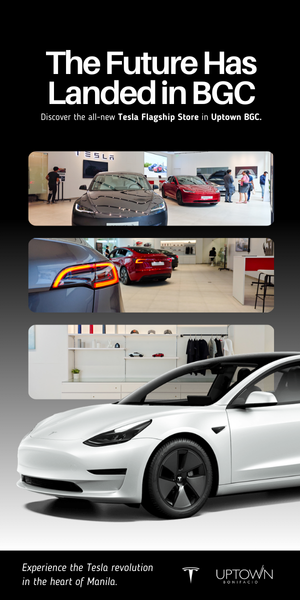When Southeast Asia’s tech scene makes international headlines, two countries dominate the narrative: Singapore, with its government-funded accelerators and polished fintech startups; and Indonesia, whose massive population and unicorns like GoTo have attracted billions in venture capital.
The Philippines, in contrast, is often treated as a footnote. But that might be a mistake.
A new generation of Filipino founders is proving that this country, long overlooked in regional startup rankings, is not just catching up — it’s building its own playbook. It’s scrappier, more culture-driven, and deeply grounded in the everyday realities of Southeast Asia’s most socially active population.
Backed by rising investment, a mobile-first economy, and a uniquely viral digital culture, the Philippines is quietly becoming one of the region’s most fertile grounds for innovation.
The Demographic Engine
With over 110 million people and a median age of just 25, the Philippines has all the demographic markers of a high-growth tech economy.
Internet penetration exceeds 76 percent, and Filipinos consistently rank among the most active users of social media globally — spending an average of 3.5 hours per day on platforms like Facebook, TikTok, and YouTube, according to We Are Social’s 2024 global digital report.
But beyond sheer numbers, it’s the country’s cultural fluency with technology that stands out. This is a nation that leapfrogged desktop internet and went straight to smartphones.
Where informal Facebook groups substitute for e-commerce marketplaces, and TikTok trends spark nationwide buying habits within days.
Unlike in Western markets, where platforms are often treated as transactional tools, Filipinos integrate them into nearly every aspect of daily life — from education to business, entertainment, and politics.
From Capital-Starved to Capital-Backed
Until recently, the Philippines lacked the venture funding infrastructure to match its potential. But in 2023, local startups raised a record-breaking $1.1 billion in funding, a signal that international capital is finally catching on.
Local VCs such as Kaya Founders, Foxmont Capital, and Kickstart Ventures have emerged as major players, while global firms like Sequoia, Wavemaker, and Gobi Partners are expanding their Philippine footprint.
The rise of events like Startup PH Week and the implementation of supportive legislation under the Philippine Innovation Act and the CREATE Law have further legitimized the ecosystem.
Government-backed organizations like the Department of Trade and Industry’s QBO Innovation Hub are also playing a crucial role in founder education and incubation.
Building for the 99%, Not the 1%
What makes the Philippines’ startup ecosystem stand out isn’t just the talent or the market size — it’s the nature of the problems founders are trying to solve. In the absence of widespread access to traditional infrastructure, startups here are building tools that address basic needs: finance, healthcare, transportation, and logistics.
Fintech continues to dominate, with companies like GCash and Maya enabling digital financial access for tens of millions. According to Bangko Sentral ng Pilipinas, digital wallet usage surpassed 60% of the adult population in 2023.
Healthtech solutions like KonsultaMD offer 24/7 access to doctors through voice or video, filling critical gaps in a country where medical deserts are common outside major cities.
Perhaps the most telling example of this “infrastructure-as-startup” ethos is GoTyme Bank, which raised over $250 million in 2023.
A joint venture between the Gokongwei Group and South Africa’s Tyme Group, GoTyme merges mobile-first banking with physical kiosks placed in supermarkets and retail stores — targeting the 44 million unbanked Filipinos who have long been excluded by traditional banks.
The Rise of Movement and Media Startups
Beyond finance and health, the mobility sector is seeing quiet disruption. One notable example is Doon, a peer-to-peer car rental platform that allows Filipinos to monetize their idle vehicles while providing more flexible and localized transportation options — particularly in areas underserved by traditional rental companies.
Even media — traditionally seen as a legacy sector — is being reengineered from the ground up. Platforms like us here ate Peanut Gallery Media Network (PGMN) aren’t just reporting news, they’re shaping the viral narratives that startups need to thrive in a content-saturated landscape.
In a country where trust in traditional media has declined significantly, PGMN is bridging credibility and reach — combining viral-first content creation with an editorial backbone. With over 20 million monthly views across social platforms, PGMN exemplifies how digital-native media can scale as fast as the startups it covers.
Scrappy Models, Global Potential
Many of the Philippines’ most successful startups share a common trait: they operate lean, move fast, and grow in non-linear ways.
Pickup Coffee, for example, scaled to over 300 locations within two years by offering affordable premium brews at ₱50 — using a hybrid cloud kitchen and kiosk model that requires minimal capital and fits into dense urban landscapes.
Kumu, the Filipino livestreaming app, has raised over $100 million and built a creator economy tailored to Filipino humor, language, and online behavior — competing with global giants like TikTok on cultural resonance alone.
This local-first thinking is key. Filipino startups aren’t just trying to clone Western models. They’re adapting to local constraints and preferences, then scaling outward. The result is a blueprint that could work across other emerging markets, from South Asia to Latin America.
The Philippines’ Startup Superpower? Culture
Ultimately, what sets the Philippines apart isn’t just economic data or mobile usage stats — it’s cultural velocity. Filipino digital behavior isn’t just high-volume, it’s highly influential. Trends born in the Philippines don’t stay in the Philippines.
In a media landscape shaped by virality, where culture drives adoption more than marketing does, this is an underrated superpower.
Startups here don’t need 10 years and $10 million to scale. Sometimes, all they need is the right meme, moment, or movement.
The Bottom Line
The Philippines may not look like your typical tech hub — and that’s exactly why it works. It’s not trying to become the next Silicon Valley. It’s building something more culturally fluent, socially relevant, and resilient to the volatility of global capital.
Whether it’s a digital bank with retail roots, a mobility app born in a tricycle economy, or a media network reverse-engineering trust and reach — the Philippines is building startups that reflect who and where they are.
And in doing so, they just might be building Southeast Asia’s most underrated — and unexpected — startup powerhouse.








